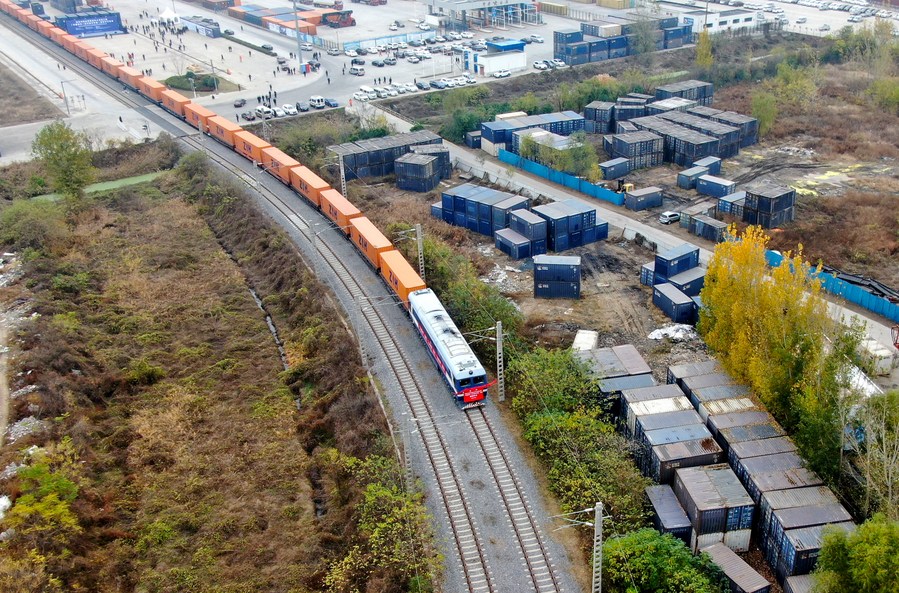Victory over poverty draws praise abroad
By APARAJIT CHAKRABORTY in New Delhi | China Daily | Updated: 2022-01-18 10:11

Scholars say China's strategies, starting with basic needs, offer valuable lessons
When Ritu Agarwal visited villages in Central China's Henan province in 1997 as a research scholar from New Delhi, she found people living in "almost backward" conditions and mired in poverty.
The rural communities were suffering due to constant flooding from the Yellow River. People lived in poorly structured houses, with no electricity and clean water. The soil was poor, farming was limited to grain cultivation and there were not many opportunities for occupations outside farming. Most of the children could not dream of gaining higher education to improve the living standards of their families. To Agarwal, it seemed that an improvement in the people's lives would be all but impossible.
Fast forward to the next decade, the Indian scholar witnessed something of a miracle with the huge transformation evident when she visited rural China in 2015 and 2017.
Agarwal said she noticed prosperity in the villages as they were connected with roads and highways. Families were living in brick homes with electricity and had access to clean water. Also, nearly every child attended elementary school, said Agarwal, who is now an associate professor at the Centre for East Asian Studies at Jawaharlal Nehru University, or JNU, in New Delhi.
Such villages are among the many successes achieved by China in its policies to eradicate abject rural poverty. China announced in late 2020 that the nation had removed the last remaining counties from a list of poor regions, in the southwestern province of Guizhou, and achieved the goal of eliminating extreme poverty.
'Great story'
President Xi Jinping declared on Feb 25 last year that China had scored a "complete victory" in its fight against poverty by lifting all 98.9 million poverty-stricken people out of penury since the country started a new round of its anti-poverty drive in late 2012.
Altogether, more than 770 million Chinese have been lifted from absolute poverty in the past four decades. China's success in eliminating absolute poverty since the start of the nation's economic reforms is a "great story in human history", the World Bank has acknowledged.
Indian experts note that China has adopted a variety of reforms and poverty alleviation strategies in different periods, and the overall strategy was to promote broad-based economic development. Much of the focus has been on the poorest rural areas, the experts said.
"The government directed resources to human development, especially to education, healthcare and decent nutrition. Later, it focused attention to the lagging regions and rolled out special measures to address the issue," said economist R.Ramakumar, of the Tata Institute of Social Sciences in Mumbai.
China poured almost $700 billion in loans and grants into poverty alleviation between 2015 and 2020-about 1 percent of each year's economic output, excluding large donations by State-owned enterprises, according to government data.
The government provided free elementary education for all children and financed road construction to strengthen rural connectivity, and also spent a lot on projects to bring electricity and clean water to rural areas, the Indian experts noted.
There was determination among officials at local levels to bring new businesses, new jobs and new infrastructure in the targeted lagging regions according to their specific conditions, said B. R. Deepak, a professor at the JNU's Centre for Chinese and Southeast Asian Studies.
Relocating millions of people from remote villages into apartment complexes has been one of the important tasks carried out by government officials to wipe out poverty, said Avijit Banerjee, a professor in the Department of Chinese Language and Culture at Visva-Bharati University in West Bengal.
Sometimes these structures were built in towns and cities, but in some places new villages were built near the old ones, Banerjee said.
China had completed the construction of more than 2.66 million houses to resettle 9.6 million impoverished people during the period of the 13th Five-Year Plan (2016-20), according to the nation's top economic planning agency.
Beijing's success in eradicating extreme poverty stems from three powerful factors: The Communist Party of China's leadership, commitment, and its mobilization, said Nilotpal Basu, a former member of the Indian parliament and politburo member of the Communist Party of India (Marxist).
China's poverty alleviation efforts provide valuable lessons for developing countries across the globe, Basu added.
The writer is a freelance journalist for China Daily.
























